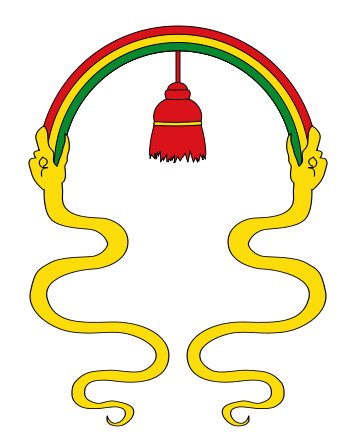Once again, the beginning of side b ought to describe an ordinary year because the previous leap year should end - in the well ordered calendar - with day 460 = April 4 (where maybe 16 * 4 = 64 = 8 * 8 rather than 4 * 4 = 16):
However, the counting at the end of side a could still be according to the leap year, with the Gregorian day numbers alluding to the end of the Sun year 100 days earlier - see for instance the empty head-gear in day 466 = 366 + 100.
But the glyph numbers of the text are to be counted from the March equinox, with e.g. night 384 (= 383½ + ½) where an empty gap evidently is visualized:
The last glyph on side a is a hand 'in the northeast' and this empty hand can be compared with the Inca banner above, where a pair of similar 3-fingered 'hands' (serpent mouths) are carrying a rainbow. The single hand in *Ca14-29 is followed not by a rainbow but its opposite, a raa-raa type of glyph which probably is symbolizing a place of negation (absence) of Sun (Raa):
Number 393 at Cb1-1 was possibly intended to be equal to 193 + 200, as a kind of translation of the 'leap day' in July 12 when Castor rose with the Sun, the day after Antares had culminated:
| ||||||||||||||||||||||||||||||||||||||||||||||||||||||||||||||||||||||||||||||||||||||||||||||||||||||||||||||||||||||||||||







